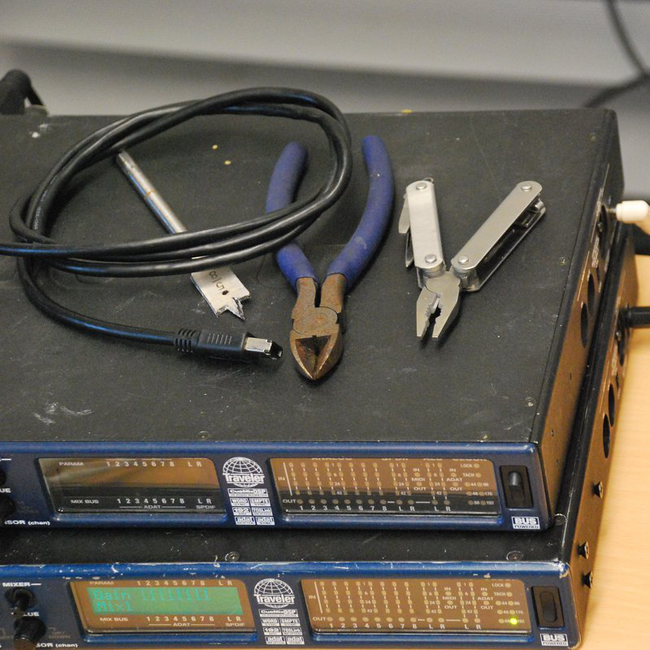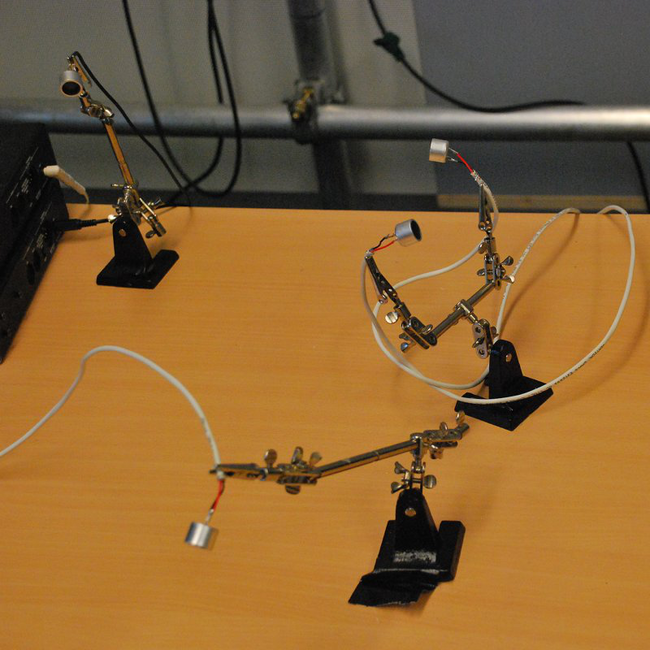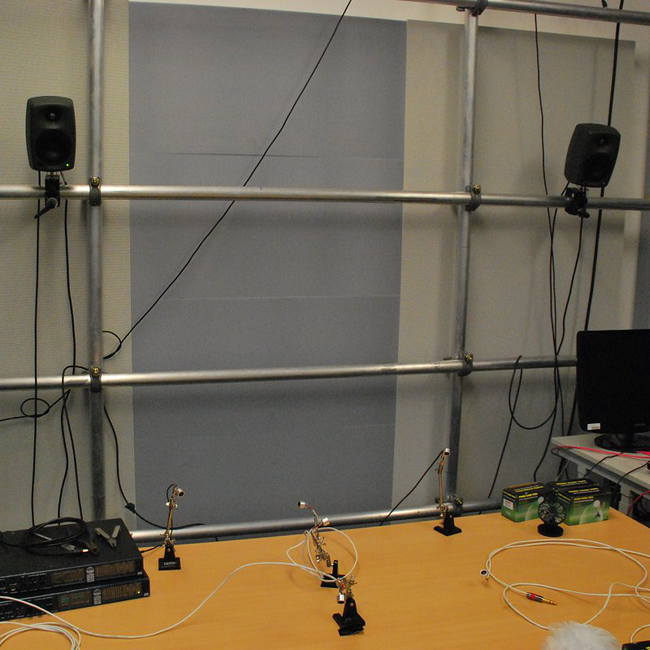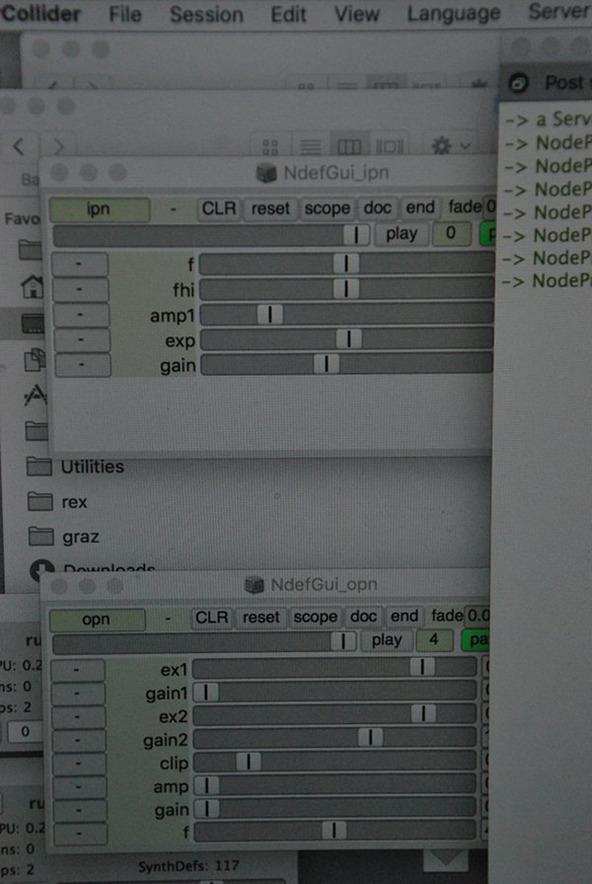In the first iteration, Ron came with a single MOTU Traveler, and in January returned with two devices. They run at 192 kHz and can thus record and produce ultra-sound. Ron uses the line inputs and outputs directly, doing all the amplification in SuperCollider.
Pliers and other tools.
{keywords: [_, MOTU, soundcard, SuperCollider]}
The ultra-sound transducers are sourced from a general electronics supply, and soldered to audio cables and jack plugs. Since they are very directional and tiny movements matter, a specific (feedback) situation can be created by adjusting their position, as they are mounted on "third hand tools". The transducer on the front left is acting as speaker here, the two transducers mounted on the hand right behind it, act as feedback microphones; in this moment, only one of them is active; it even works when pointing towards the foam at the wall because "ultra-sound bounces off everything". The single transducer mounted in the rear left is one of two microphones picking up the ultra-sound but sending it not into the DSP feedback that goes to the ultra-sound speaker, but instead to studio monitors (Genelec), after applying a modulation to bring the sound back into audible range. In the first iteration, Ron didn't use dedicated microphones but used one ultra-sound transducer both for the DSP feedback loop and for the transformation into audible signals to be sent to the monitor speakers. He said that having separate microphones for the two tasks allows for better and independent control of the process.
{keywords: [_, transducers, feedback, movement]}
Some of the usual suspects, like gaffer tape, and objects to control the reflections of the ultra-sound signals. Surprisingly, you can put the speaker into a wooden box and close the lid, and the feedback is still going on. But I guess this is the same principle that is at work for ultra-sound screening of pregnancies, the waves penetrate the tissue at various degrees to give an imagining. Wrapping the transducer in a thick cloth finally disables the feedback loop.
{keywords: [_, feedback, absorption]}
The 'experimental studio' is one of the IEM's facilities, often used for acoustic experiments, some building and soldering processes, and it was designed with a changeable setup in mind. There are hollow rods installed near three walls, making it easy to install and change speaker and video tracking positions. In the second iteration, Ron moved his setup to a larger table, one that will probably go to the CUBE – IEM's main in-house concert space – for the presentation at the end of January. In the photo you can see two small Genelec monitors mounted to the rear wall, with the ultra-sound feedback circuit placed on the table. When coming back from the States, Ron noticed that the behaviour changed due to the higher ceiling compared with his studio at home. We will have to schedule a few sessions in the CUBE, which again has a much larger volume and thus affects the feedback differently.
We also used the whiteboard extensively during the first iteration – unfortunately not documented in photos.
{keywords: [_, setup]}
Ron uses SuperCollider for his experiments and piece. The photo shows the automatically created GUIs for two instances of node proxies (JITlib), providing direct access to the parameters of the input and output stage of the DSP, such as gains and cut-off frequencies of filters. Ron's workflow is essentially centered around node proxies and also the SuperCollider patterns system, in the development of which played a major role. (I don't think patterns are used in the experiment depicted, though). Not visible in the photo, there are also two Nanocontrol MIDI controllers.
{keywords: [_, SuperCollider, GUI, DSP, interaction, prototype]}




